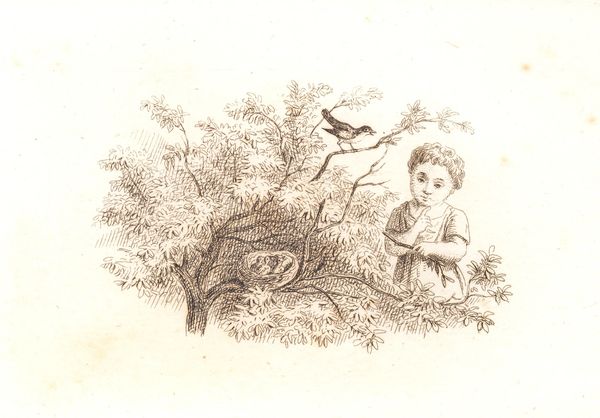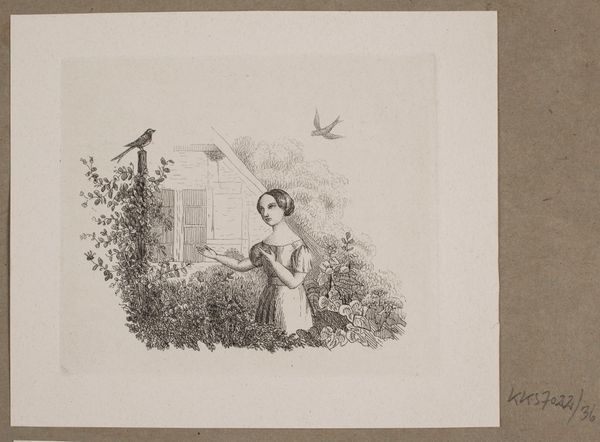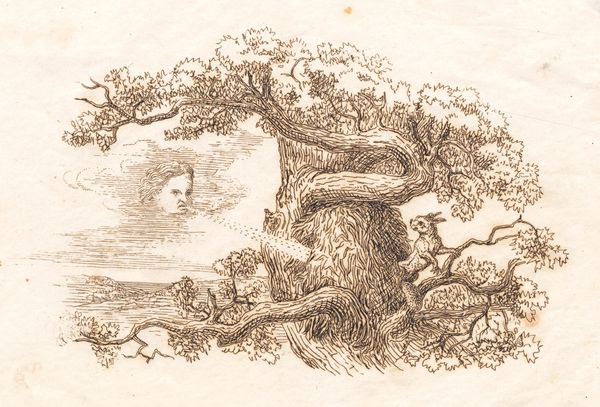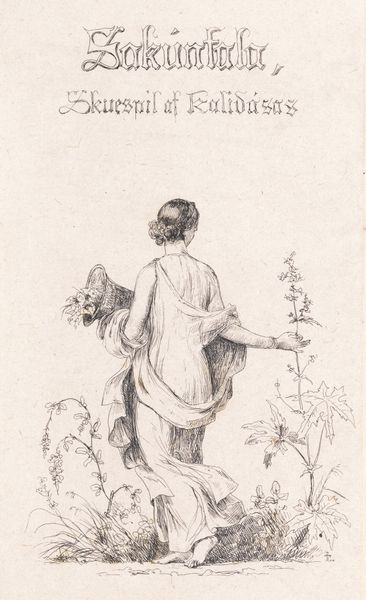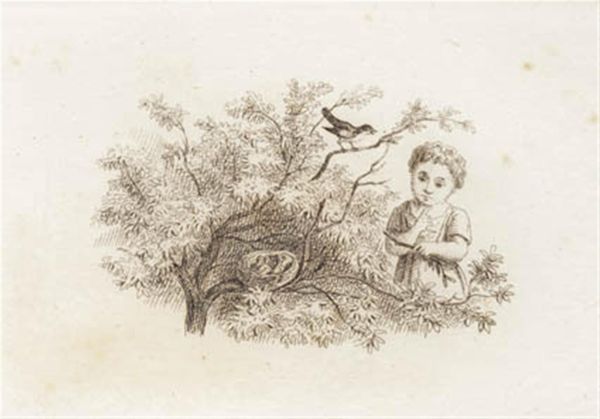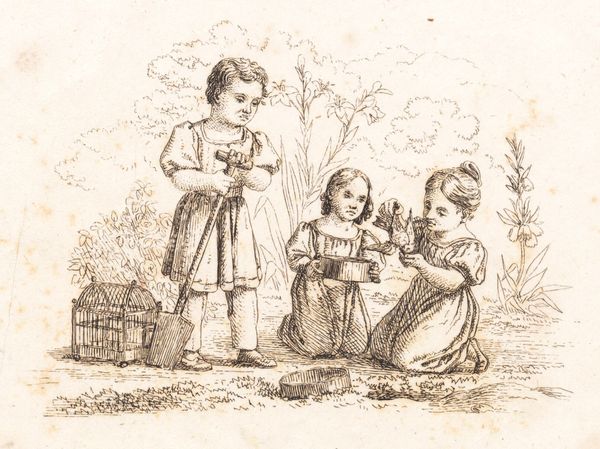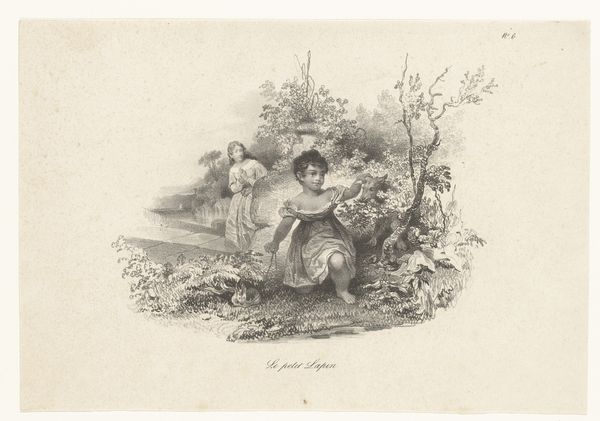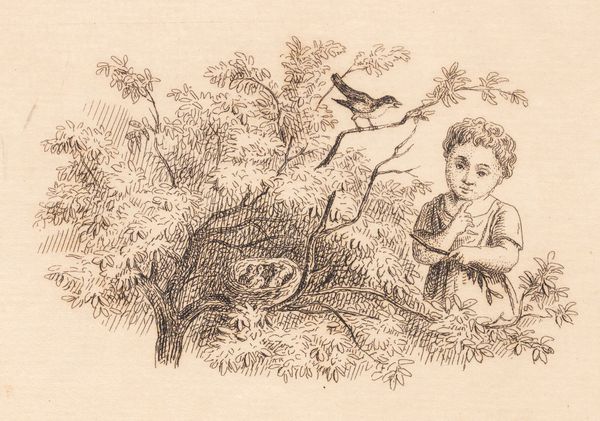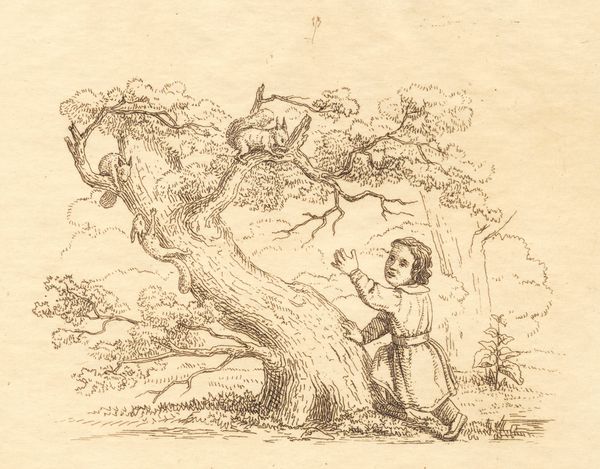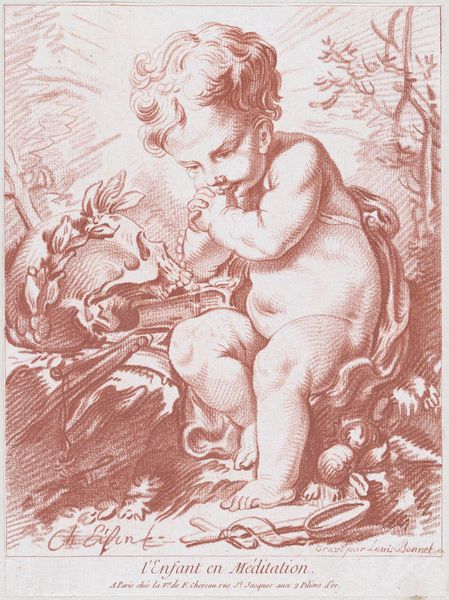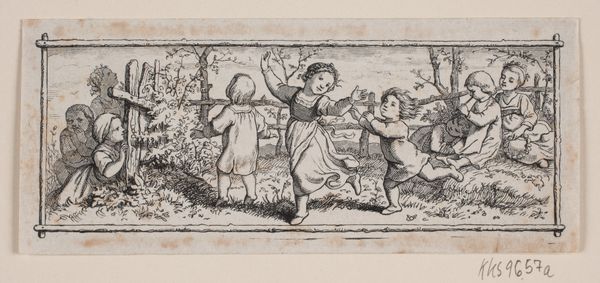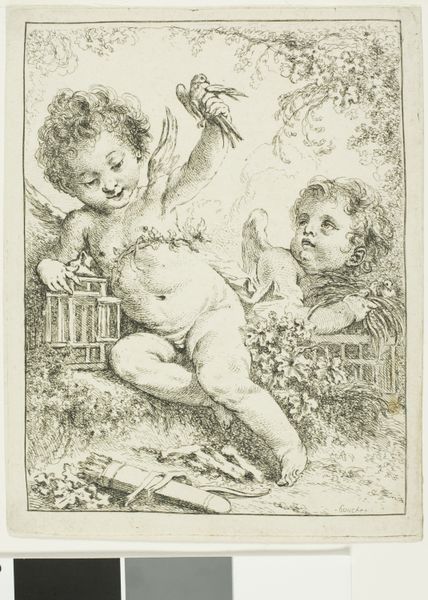
Illustration til "Halvhundrede Fabler for Børn" af Hey 1834
0:00
0:00
drawing, print, ink, engraving
#
drawing
# print
#
etching
#
figuration
#
ink
#
romanticism
#
genre-painting
#
engraving
Dimensions: 109 mm (height) x 133 mm (width) (bladmaal)
Editor: Here we have Martinus Rørbye's illustration for "Halvhundrede Fabler for Børn," created in 1834 using ink, engraving, etching, and other drawing and print techniques. The image shows a small child interacting with butterflies in a garden. There’s a naive innocence to it, almost romantic. How do you interpret this work, especially considering its historical context? Curator: This seemingly simple image offers a glimpse into the construction of childhood innocence during the Romantic era. It’s interesting to consider how images like this, produced alongside burgeoning nationalist sentiments, may have played a role in shaping idealized versions of citizenry and domesticity. What do you notice about the child's attire and posture? Editor: It seems deliberately unassuming and humble. The child's clothes are plain, and their posture suggests gentleness. Is it possible that this "gentleness" reflects broader expectations and limitations placed on individuals within different social classes or genders at that time? Curator: Absolutely. We need to consider the subtle ways in which even children's literature can be used to propagate social norms. Rørbye, through his other works, reveals an interest in cultural observations, especially of women. Do you think it is possible the garden in which he poses this child reflects the notion of a woman's space? Editor: I didn’t think of that! This is all quite revealing, knowing the illustration may suggest the limitations on one’s own social mobility, where one should behave, etc. Curator: Exactly! We must analyze the imagery beyond the superficial depiction to consider how it participates in larger cultural conversations about identity and social roles. Editor: That's incredibly insightful. I’ll definitely be thinking about the socio-political implications hidden within seemingly harmless art going forward. Thanks for sharing your perspective. Curator: My pleasure. Recognizing the intersections between art, identity, and power helps us understand how even the simplest images contribute to broader narratives.
Comments
No comments
Be the first to comment and join the conversation on the ultimate creative platform.

